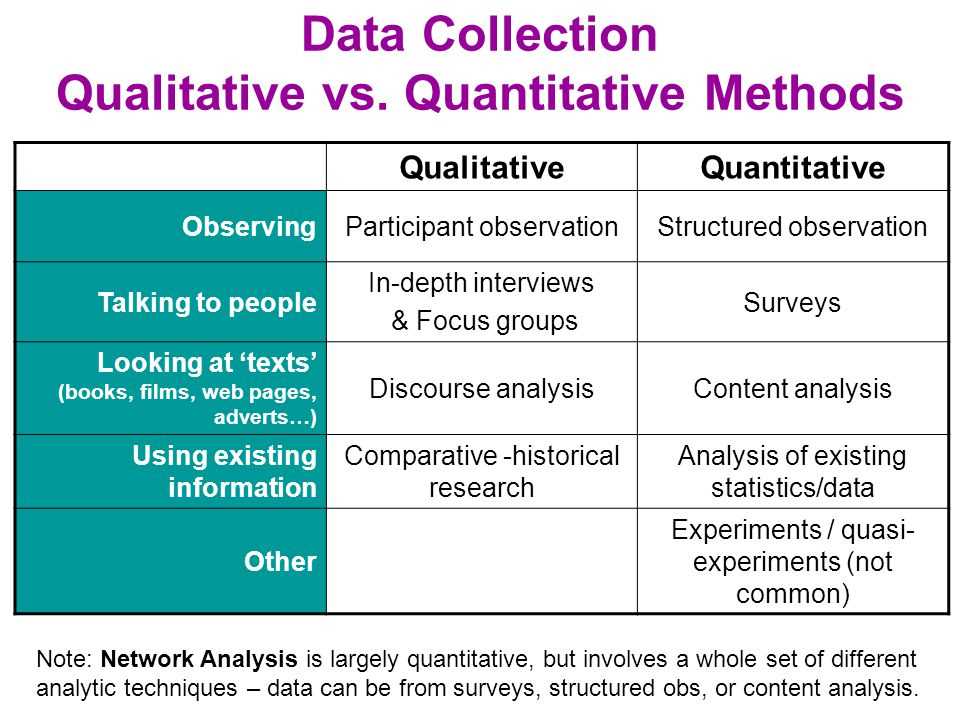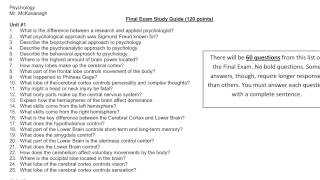
Preparing for a final exam in US history can be a daunting task, especially with the vast amount of information that needs to be covered. This study guide aims to assist students in reviewing key concepts and events that have shaped the history of the United States. It provides an overview of the major historical periods, important figures, significant events, and key ideas that students should be familiar with.
Starting with the Colonial period, this study guide delves into the founding of the thirteen original colonies, the establishment of democratic ideals, and the development of the economy and culture. It then progresses to the Revolutionary War, the writing and ratification of the Constitution, and the early years of the Republic. The study guide also explores the westward expansion, the Industrial Revolution, and the sectional tensions leading to the Civil War.
Additionally, the study guide covers the Reconstruction period, the rise of big business and the Progressive Era, America’s involvement in World War I and World War II, the Civil Rights Movement, and the Cold War. It concludes with an examination of recent events and trends in US history, such as the Vietnam War, the technology revolution, and the challenges faced in the 21st century.
By utilizing this study guide and focusing on the key themes and concepts outlined within, students will be able to review and solidify their understanding of US history, ensuring they are well-prepared for their final exam. Each section provides a concise summary of the major points alongside notable figures and events, allowing students to efficiently identify and grasp the most important information. Good luck with your final exam preparation!
US History Final Exam Study Guide: Key Topics to Review
As you prepare for your US History final exam, it is important to review key topics in order to ensure success. By focusing on these key areas, you will have a solid understanding of the major events, individuals, and concepts that have shaped the history of the United States.
Here are some key topics to review:
- The American Revolution: Understand the causes and consequences of the American Revolution, including the Declaration of Independence, the role of key figures such as George Washington and Thomas Jefferson, and the impact of the war on the colonies.
- The Constitution: Familiarize yourself with the creation of the United States Constitution and the debates surrounding its ratification. Pay attention to the structure of the government, the Bill of Rights, and its significance in shaping the nation.
- The Civil War: Explore the causes and consequences of the Civil War, including the issue of slavery, the Emancipation Proclamation, and the key battles and leaders of both the Union and Confederate armies.
- The Industrial Revolution: Examine the impact of the Industrial Revolution on the United States, including the growth of industries such as railroads and steel, the rise of big business, and the challenges faced by workers.
- The Civil Rights Movement: Analyze the struggle for civil rights in the United States, from the abolitionist movement to the African American civil rights movement of the 1950s and 1960s. Understand the key figures, events, and legislation that shaped this movement.
In addition to these key topics, be sure to review other important events such as the Great Depression, World War I and II, the Cold War, and the presidency of Franklin D. Roosevelt. Take the time to understand the context, causes, and consequences of these events in order to gain a comprehensive understanding of US history.
The American Revolution: Causes, Events, and Impact
The American Revolution was a significant event in the history of the United States, as it marked the country’s fight for independence from British rule. The revolution was primarily caused by a series of grievances and tensions that had been building between the American colonists and the British government. These grievances included taxation without representation, restrictions on trade, and infringements on individual freedoms. The colonists felt that their rights as Englishmen were being violated, leading to a growing sense of discontent and desire for independence.
The American Revolution began with the outbreak of armed conflict between the American colonists and British forces. The first major event was the Battles of Lexington and Concord in April 1775, where colonial militia members clashed with British soldiers. This marked the start of the Revolutionary War, which would last for more than eight years. The war included significant battles such as the Battle of Saratoga, where the Americans achieved a crucial victory that helped secure foreign support, and the Battle of Yorktown, which ultimately led to the British surrender.
The impact of the American Revolution was far-reaching. It resulted in the establishment of the United States as an independent nation and laid the foundation for the principles of democracy and individual rights. The revolution also had broader global implications, inspiring other countries and colonies to pursue their own fights for independence. Additionally, the revolution led to the drafting and adoption of the United States Constitution, which remains the supreme law of the land to this day. Overall, the American Revolution was a pivotal moment in history that shaped the course of the United States and influenced the world.
The Constitution and the Birth of the United States

The creation of the United States Constitution marked a pivotal moment in American history. It was the result of the efforts of the founding fathers and their desire to establish a strong, centralized government that would protect the rights and freedoms of its citizens. The Constitution was drafted during the Constitutional Convention in 1787, and after much debate and compromise, it was finally ratified by the states in 1788, officially establishing the United States as a nation.
The Constitution is a foundational document that outlined the structure of the government and defined the powers and responsibilities of the three branches: the legislative, executive, and judicial. It also established the system of checks and balances, which ensures that no single branch becomes too powerful. Additionally, the Constitution guarantees certain individual rights, such as freedom of speech, religion, and the right to a fair trial.
The ratification of the Constitution was not without controversy. There were those who believed that it gave too much power to the federal government and infringed upon the rights of the states. In response to these concerns, the Bill of Rights was added to the Constitution in 1791, explicitly protecting individual liberties and further limiting the powers of the federal government.
The Constitution has endured for over two centuries and has served as a guiding principle for the United States. It has not only provided the framework for the government but also allowed for the expansion of rights and freedoms as society has evolved. The Constitution continues to shape the nation and its laws, demonstrating its lasting significance in American history.
Westward Expansion: Manifest Destiny and the Frontier
The concept of Manifest Destiny, which emerged in the mid-19th century, played a significant role in driving westward expansion in the United States. It was the belief that it was the divine mission of the American people to expand their territory and spread their values and civilization across the continent. This idea fueled the westward migration and acquisition of land, leading to the settlement of new territories and the establishment of the frontier.
Driven by Manifest Destiny, pioneers embarked on treacherous journeys, defying geographical and environmental challenges, in pursuit of a better life and opportunities in the West. They faced harsh conditions during their travels, including dangerous landscapes, Native American resistance, and limited resources. Despite these hardships, American settlers continued to push westward, often displacing Native American tribes and disrupting their way of life.
The frontier, a term coined by historian Frederick Jackson Turner, referred to the advancing boundary of settled territory. The frontier played a crucial role in shaping American society and culture. It served as a symbol of rugged individualism, self-reliance, and opportunity. The expansion of the frontier also contributed to economic growth, as it opened up new lands for agriculture, mining, and trade.
The notion of Manifest Destiny and the frontier were not without controversy. Critics argued that the westward expansion disregarded the rights of Native Americans and led to conflicts and violence. The displacement of indigenous populations and the loss of their ancestral lands perpetuated a long history of injustice and marginalization. Nevertheless, the idea of Manifest Destiny and the frontier helped shape the identity and aspirations of the American people, leaving a lasting impact on the nation’s history.
Slavery and the Civil War: Causes, Battles, and the Emancipation Proclamation

The institution of slavery played a pivotal role in the history of the United States, ultimately leading to the outbreak of the Civil War. Slavery was deeply rooted in the Southern states, where it was seen as essential to the economic success of the region’s agrarian society. However, as the Northern states industrialized and embraced a more modern way of life, the issue of slavery became a source of tension and conflict between the North and the South. The divide over slavery became a major factor leading to the secession of the Southern states and the eventual outbreak of the Civil War in 1861.
The Civil War was fought between the Union, or the Northern states, and the Confederacy, or the Southern states that chose to secede. The war was characterized by a series of major battles, such as the Battle of Gettysburg and the Battle of Antietam, which resulted in significant casualties on both sides. These battles were fought over strategic objectives and territory, but at the heart of the conflict was the fundamental issue of slavery.
The Emancipation Proclamation, issued by President Abraham Lincoln in 1862, was a turning point in the Civil War and in the fight against slavery. The proclamation declared that all slaves in Confederate-held territory were to be freed, effectively transforming the war into a struggle for emancipation. While the Emancipation Proclamation did not immediately free all slaves, it shifted the focus of the war and set the stage for the eventual passage of the 13th Amendment, which abolished slavery in the United States.
- The institution of slavery was a major cause of the Civil War.
- Battles such as Gettysburg and Antietam were fought over strategic objectives but were fundamentally driven by the issue of slavery.
- The Emancipation Proclamation transformed the war into a fight for emancipation.
- The eventual passage of the 13th Amendment abolished slavery in the United States.
Reconstruction Era: Rebuilding the Nation after the Civil War
The Reconstruction Era, which lasted from 1865 to 1877, was a critical period in American history that aimed to rebuild and reunite the nation after the Civil War. It occurred immediately after the Emancipation Proclamation and the passage of the Thirteenth, Fourteenth, and Fifteenth Amendments, which abolished slavery, granted citizenship and equal protection under the law to African Americans, and provided them with the right to vote, respectively.
During this time, the federal government faced the daunting task of restoring the Southern states to the Union and establishing a new social, political, and economic order in the aftermath of the war. The main goals of Reconstruction were to protect the rights of freed slaves, ensure their inclusion in the political process, and rebuild the devastated Southern infrastructure.
Key Aspects of Reconstruction

- Presidential Reconstruction: The initial phase of Reconstruction was led by President Abraham Lincoln and, after his assassination, by his successor, Andrew Johnson. They pursued a lenient approach towards the Southern states, granting general amnesty to former Confederates and urging them to establish new state governments.
- Radical Reconstruction: The Radical Republicans, a faction of the Republican Party, grew increasingly dissatisfied with the slow progress of Presidential Reconstruction and sought a more aggressive approach. They pushed for the passage of the Reconstruction Acts of 1867, which divided the South into military districts and mandated the ratification of the Fourteenth Amendment.
- Black Codes and Reconstruction Amendments: The Southern states enacted a series of laws known as Black Codes, which aimed to restrict the rights and freedoms of African Americans. In response, the Reconstruction Amendments were passed to protect the civil rights of freed slaves and guarantee their equal protection under the law.
- Impeachment of President Johnson: The clash between President Johnson and the Radical Republicans reached its peak when Johnson violated the Tenure of Office Act and attempted to remove Secretary of War Edwin M. Stanton from his position. The House of Representatives voted to impeach Johnson, making him the first President to face impeachment proceedings.
- End of Reconstruction: Reconstruction came to an end in 1877 with the Compromise of 1877. As part of this compromise, Republican candidate Rutherford B. Hayes became President, but in return, he agreed to the withdrawal of federal troops from the South, effectively ending Reconstruction and leading to the reinstatement of Southern white rule.
The Reconstruction Era, though marked by significant advancements in civil rights and the expansion of political participation for African Americans, ultimately fell short of its goals. The lingering effects of Reconstruction and the failure to fully address the legacy of slavery would continue to shape American society and race relations for decades to come.
The Industrial Revolution and its Impact on American Society

The Industrial Revolution was a major turning point in American history that brought about significant changes in society, economy, and technology. It began in the late 18th century and continued throughout the 19th century, transforming the United States from an agrarian society to an industrialized nation.
Industrialization and Urbanization: One of the key impacts of the Industrial Revolution was the shift from rural farming communities to urban industrial centers. As factories and industries emerged, people moved from farms to cities in search of employment opportunities. This led to rapid urbanization, the growth of cities, and the development of crowded industrial areas marked by poor living and working conditions.
Technological Advancements: The Industrial Revolution also brought about numerous technological advancements that revolutionized the way Americans lived and worked. Inventions such as the steam engine, the telegraph, and the cotton gin improved transportation, communication, and manufacturing processes. These innovations not only increased productivity and efficiency but also paved the way for future advancements in the fields of transportation, communication, and machinery.
Impact on Labor and Working Conditions: While the Industrial Revolution brought about economic growth and technological progress, it also had negative consequences on the labor force. Factory workers, including men, women, and children, often faced long working hours, dangerous working conditions, and low wages. Labor unions emerged during this time to advocate for workers’ rights and improve working conditions.
Social and Economic Changes: The Industrial Revolution had a profound impact on American society and the economy. It led to the rise of a new middle class, as more people found employment in industries and occupations other than farming. It also increased economic inequality, as wealthy industrialists amassed great fortunes while many workers struggled to make ends meet. The growth of industries and the availability of mass-produced goods also changed consumer behavior and established a culture of consumerism.
Conclusion: The Industrial Revolution transformed American society in profound ways, from the shift toward urbanization and technological advancements to the impact on labor and the economy. While it brought about significant progress and prosperity, it also raised important social and ethical questions about the treatment of workers and the distribution of wealth. The effects of the Industrial Revolution continue to be felt in the modern United States, shaping the industrialized nation that we know today.